A Cuban Soap Opera Remakeby Matias Travieso-Diaz and Eloy Gonzalez-Argüelles [I want to speak, I want to speak, tell everyone Albertico Limonta is my grandson, the child of my oldest daughter Maria Elena.] Don Rafael del Junco’s silent litany in El Derecho de Nacer by Felix B. Caignet In mid-2047, the Instituto Cubano de Radio y Televisión (Cuban Institute of Radio and Television, or CIRT), received a proposal for a revival of the 1948 radio soap opera El Derecho de Nacer (The Right to be Born) by the Cuban radio writer Félix Benjamín Caignet Salomón. At the time, El Derecho, as it was called, swept Cuba by storm, and then spread to all of Latin America in a run that lasted over fifty years. It was regarded as one of the most influential soap operas of all time, and had been the subject of numerous radio, television and movie adaptations. The revival (in the form of a TV series to be aired in Cubavision) was to start in April 2048 to coincide with the centenary of the original radio broadcast. José (“Pepe”) Cubero, a brilliant movie and TV producer and director, was the proponent and strongest defender of the project. He acknowledged that the 1948 soap opera would have to be modified a bit to make it consistent with the culture and politics of twenty-first century Cuba, but felt the changes would be small and well within his creative abilities. The proposal met opposition from some of the most orthodox members of the Communist Party. They claimed that the original story was rife with the type of bourgeois, capitalistic ideology that had been eradicated after almost ninety years of Socialist rule. Other opponents, more practical, pointed to the chronic economic crisis that bedeviled the island with words like these: “Anything we broadcast must encourage the Cuban people to work harder, make sacrifices, concentrate on rebuilding the economy in the face of the heartless Yankee blockade. El Derecho is a frivolous, escapist diversion that would get us sidetracked from our mission. And it will run for many months, compounding the damage.” The matter was kicked upward to land on the lap of Miguel Diaz-Canel, who had been President and First Secretary of Cuba’s Communist Party for almost thirty years. He was in his mid-eighties and getting ready to step down, so he was in no mood to mediate in ideological disputes. He ruled: “Let Pepe Cubero come up with a proposed screenplay and give it to the President of the CIRT and the Minister of Culture. Let those guys decide what changes to the screenplay are required to render it acceptable, make those changes, and run with it. Don’t bother me with this shit again.” The Minister of Culture, Haydée Alonso, who had studied in Paris, quoted Sartre, and prided herself on being open-minded and liberal (within the ideological bounds of the Party), was enchanted with the idea of a revival of El Derecho, so she was inclined to give Cubero a relatively free hand. This was good news to Cubero, although no one else liked Haydée. No one forgave her for her unpatriotic preference for smelly Gauloise cigarettes that stunk up the studio, and that she did so “in the land where the best tobacco in the world used to be grown.” The CIRT President, Danylo López, was an old, dried-up bureaucrat concerned mainly with toeing the Party line and avoiding controversies, and was not amenable to letting Cubero get away with much. Torn between polar extremes, development of the new version of the soap opera proceeded in painful fits and starts. The first bone of contention was the character of Don Rafael del Junco, the villain of the story. Everyone agreed that Don Rafael, a haughty unscrupulous landowner, was a proper embodiment of the pre-Revolutionary capitalistic class. However, at the end of the original 314 episodes, Don Rafael reconciled with his daughter and grandson, and ended up being presented in a somewhat favorable light. “We have to change the ending” argued Danylo. “There can be no redemption for the enemies of the people.” Cubero reluctantly agreed to modify the end of the series so that Don Rafael got his comeuppance. He was hoping against hope that by the time the last episodes were filmed Danylo would have changed his mind. Then there was María Elena, the daughter of Don Rafael and mother of the hero of the series. Again, everyone agreed that she showed courage in refusing to have a late term abortion and insisting on giving birth to her illegitimate child. However, in the original series she sought shelter for her grief in a convent, where the nuns and other members of the community treated her with compassion and understanding. Danylo was loath to include any episodes that praised religious people. “Religion is the opium of the masses, and the State must not condone it in any manner.” Cubero had to change the script to have María Elena become a sort of hermit, seeking solace from the apparent loss of her child on a deserted shore. That in itself was problematic, since Cuba had implemented an internal passport system that was rigidly enforced. In the new Cuba, there was nowhere to hide. At the end, this discrepancy was allowed as poetic license, hoping it would not be noticed by anyone who had the power to object. In the original El Derecho María Elena leaves her newborn baby boy in the care of her once wet nurse, the black María Dolores, who saves the infant from being slain on orders from Don Rafael, manages to give Don Rafael the false impression that she and the baby are dead, and escapes with the infant to a remote village. There, she raises the boy as her own child, naming him Alberto (“Albertico”) Limonta. One salient and recurring problem was the relationship between “son” and “mother,” due to the fact that María Dolores claimed he was her son, even after his infancy. Yet, the actor chosen by Cubero to play Albertico, Ontario (“Guapito”) Ledesma, was white. Very white. Blondish. On the other hand, the lady portraying María Dolores was black, as stipulated by Caignet in the original soap opera. Coal black. No one seemed to find the discrepancy odd except for Haydée, who said that the role of María Dolores seemed taken out of Gone with the Wind. Her remark was met with a deadpan silence, for nobody in Cuba remembered or cared about old Yankee movies. The racial disparity problem did not fully surface at first, because the boy who played Albertico as a child had a darker complexion that made his relationship with María Dolores more credible. But later on in the show, when Ontario assumed the role of 25-year-old Albertico, María Dolores’ claim that he was her son began ringing hollow. Different suggestions were considered: darkening Ontario’s skin with blackface make-up like Laurence Olivier in Othello, other things of that nature. Haydée opposed them all, because, she said, it was not impossible that Albertico could still be María Dolores’ biological son. So, things were left unchanged. There was one scene, however, when the script called for older Albertico to run up to his mother and say, “Mamá, I love you so” as he hugged the black woman. The scene had to be redone many times because the crew in the studio—and later on, even Albertico and María Dolores—could not control their laughter. In the end, the scene was filmed as it was and prompted sarcastic comments among the viewers once aired. Much was done in the original series to highlight the discrimination and ill treatment that both María Dolores and Albertico endured on account of her race. Danylo liked that and wanted to accentuate the criticism of the racist society that existed in the country before the Revolution, but was opposed by Haydée, who warned not to overdo that aspect of the plot. “Remember, Danylo,” she said, “there are still people left in this country who believe blacks are inferior, although they won’t openly admit to it. There is no point in rubbing their noses on our commitment to equality among the races.” At the end, Danylo carried the day. Albertico, who was white, would be repeatedly abused and discriminated against for having a black mother and being a mulatto. In one scene intended to bring more “realism” to the story, a classmate of Albertico has a fight with him and calls him an “hijo de puta” (a bastard), not an uncommon insult in Spanish. Danylo objected to the use of such foul language, as it was not in keeping with Socialist morality. Haydée replied that this choice of words was used by ordinary people and prude sentiments to the contrary were a bourgeois atavism. A heated debate ensued and, at the end, Haydée seemed to say that the language in the series should not be controlled by a “partido de hijos de puta,” which many people took to refer to the Communist Party. Haydée, however, swore that she had not said “Partido” but “partida,” meaning “bunch” or “group,” without any political connotation. Since no one could produce a definitive argument, the matter was dropped, along with the entire scene. Many episodes later, thanks to María Dolores’ innumerable sacrifices, Albertico manages to make it through the university and becomes a famous doctor. In the original version, Albertico gets to be rich and lives in comfort with his aging “mother.” Both Danylo and Haydée objected to this turn of events. Cubero was required to rewrite that part of the story to have Albertico live modestly, see indigent patients for free, and travel to Haiti to help treat the victims of a devastating earthquake. In the rewrite, Albertico returns to Cuba with a newfound social conscience, alert to the inequities of the capitalist society and committed to fighting them. Later in the series, Albertico is doing night duty at a public hospital’s emergency room when several injured people are brought in after a traffic accident. One of them is an old man who is bleeding to death. The victim’s blood type is AB negative, the rarest type, which is unavailable at the ill-equipped public hospitals of pre-Revolutionary times. Albertico, AB negative himself, gives a transfusion that saves the man’s life. The victim, who is no other than Don Rafael del Junco, recovers and as he convalesces, he invites his savior to come to dinner and meet his family. There Albertico meets Isabel Cristina, daughter of María Elena’s sister Matilde, and a budding romance blooms between the couple, unaware that they are cousins. Danylo was not in favor of retaining potential incest as part of the plot, and Cubero had to add another twist at the end of the story where it is revealed that Isabel Cristina is not the natural daughter of Matilde, but only an adopted one, eliminating another potential offense to Socialist morality. Don Rafael, now fully recovered, is one day taking a stroll near an outside market, when he spots an old black woman that he immediately recognizes as María Dolores, who he had written off as dead many years before. He follows the woman, overtakes her, and confronts her. María Dolores acknowledges that she and Albertico are alive and well, and rebukes Don Rafael for his cruelty. Cubero is asked to add language to the confrontation scene wherein María Dolores lists once again all the aristocrat’s misdeeds and concludes with a stirring pronouncement: “Beware, for your days are numbered. The people soon will hold you accountable for all the crimes you have committed against your family and against society.” Staggered by these revelations, Don Rafael returns home, where he promptly suffers a stroke (“derrame cerebral”) (a common mishap in soap operas) and falls into a coma. In the original version, Don Rafael stays in a coma for many months, burning with desire to impart the crucial news of the existence of his missing grandson to his wife and daughter, but is paralyzed and unable to speak. Here, however, science rather than politics interferes with the progress of the story. By 2047, a process had existed for years by which an artificial intelligence (AI) could accurately decode words and sentences from brain activity. Using only a few seconds of brain activity data, the AI can guess what a person is trying to say and translates it into a voice recording. The AI was commonly used throughout the world, including Cuba, to help people unable to communicate their thoughts through speech, typing or gestures. The existence of the AI technology rendered a crucial portion of the original version of El Derecho vulnerable to ridicule by the viewing public. There was no way Don Rafael could linger, speechless, for several months. Cubero and his creative team struggled with the problem for weeks and finally had to come up with a lame solution: Don Rafael suffers a “derrame cerebral,” but recovers almost immediately and, instead of bringing the existence of his grandson to the attention of everyone, has a change of heart and continues to cover up his earlier nefarious crimes by accusing María Dolores of theft and charging Albertico with complicity in the black woman’s schemes. Isabel Cristina, whose love for Albertico has not been diminished by Don Rafael’s accusations, alerts her boyfriend before the police can seize him, and Albertico escapes to a bitter exile in Tampa, where his mulatto identity subjects him to additional discrimination and mistreatment at the hands of the American imperialists. Meanwhile, María Dolores lingers in jail and ultimately dies of sorrow. From that point on, the plot of the revival diverges entirely from the original radio show. Albertico becomes a revolutionary hero and travels back to Cuba to take up arms in the mountains against the corrupt government. He alerts Isabel Cristina of his whereabouts and she joins him to continue, together, their fight for justice. Through one of his comrades, who knew Isabel Cristina’s parents, it is revealed that Isabel Cristina and Albertico are unrelated, whereupon the couple is chastely married in a civil ceremony conducted by a rebel leader. They are enjoying a brief honeymoon when they learn that Don Rafael has been killed in a terrorist attack against the Presidential Palace, where he was attending a reception. Albertico and Isabel Cristina kiss and hug each other, relieved at the evildoer’s death, and the series ends. As the first six episodes were filmed, José Cubero had increasing misgivings about the product he was going to set before the public. Technically, the series was as good as he was capable of putting together: photography, score (instrumental renderings of Cuban ballads going back to the 1800s), sound effects, customs, editing, were all first class. He had assembled a cast of experienced actors and actresses, with a famous Spanish TV personality in the role of Don Rafael. Much of the series was shot in locations selected for their beauty or historic interest. Artistically, though, Cubero felt he was doing a disservice to—actually, betraying—Caignet’s original work and regretted all the compromises he had been forced to make to get the project approved. As a way to hide his guilt, he made sure of the destruction of all copies existing in Cuba of the audio, TV and movie versions of the series, be they from Cuba, Puerto Rico, Ecuador, Peru, Brazil, Venezuela or Mexico. Cuban censorship saw to it that no written materials describing the 1948 series were available to the public. Since there was nobody alive who had listened to the original broadcast, Cubero felt confident that he would not be confronted by critics of the savaging he had been forced to perform on the original. Still, he went to bed the night of Tuesday, March 31, 2048 with a heavy heart, in anticipation of the premiere of the series the following evening. He tossed and turned in bed all night and, in the few minutes of actual sleep, was accosted by the image of a dapper slim man sporting a trim moustache and a mane of black pomaded hair, who appeared and disappeared before him making menacing gestures and repeating incessantly a single word: “Why!!?” The first episode of the new rendering of El Derecho de Nacer was shown on Cubavision at 9 p.m. on April 1, 2048. The show ran, Monday through Saturday, for 310 episodes, the last one playing in the spring of 2049. While initially garnering much public attention, interest in the series wore off quickly, so that the last episodes were seen by almost nobody. Many concluded that much of what was shown and said in the series was predictable and no different, except for its excessive duration, from other political indoctrination efforts by the government. José Cubero finished producing the last package of ten episodes and sought and was granted permission to take a short vacation abroad to recover from his massive effort. He was last spotted taking an Iberia plane bound for Madrid on April 15, 2049. He was never seen again. 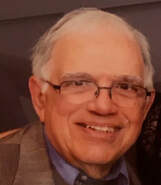 Matias Travieso-Diaz was born in Cuba and migrated to the United States as a young man. He became an engineer and lawyer and practiced for nearly fifty years. He retired and turned his attention to creative writing. Seventy of his stories have been published or accepted for publication in paying short story anthologies, magazines, blogs, audio books and podcasts. Some of his unpublished stories have also received “honorable mentions” from a number of publications. A collection of some of his short stories, The Satchel and Other Terrors, is scheduled for publication in February 2023. 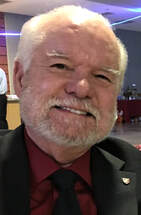 Eloy González Argüelles was born in La Habana, Cuba, and came to the United States in 1961. His studies culminated in a PhD in Romance Languages at the Ohio State University. He taught at Wheaton College (Norton, Massachusetts) and the University of Massachusetts (Harbour Campus) before moving to Washington State University (WSU), where he taught Spanish literature and literary criticism for 38 years. For ten of his last twelve years before retirement he was Chair of the Department of Foreign Languages and Cultures at WSU. His output includes a novel, a book on the chivalric novel, and articles in scholarly journals and conference presentations. Upon retirement he became an Emeritus Professor at WSU.
0 Comments
Review of ChupaCabra Meets Billy the Kid,
a Rudolfo Anaya Extra-Fiction Novel By Armando Rendón In Rudolfo Anaya’s latest book,ChupaCabra Meets Billy the Kid, science as in science-fiction gives way to the true fundamental forces of nature as he weaves a story that flashes back and forth in time. The title is misleading because it’s not really ChupaCabra, the goatsucker demon of Mexican lore, that meets Billy the Kid, a historical human artifact mythologized by Western writers of the purple prose, but a clash of realities. Obviously, the title suggests some weirdness going on. Is it fantasy, sci-fi, horror, a retro version of the time travel gimmick? Or is Rudy just pulling our collective leg? As with really good time-travel yarns, underlying the storyline are critical views of society, its social mores or disregard for humane values. I would say that in all the best science fiction I’ve read over half a century – that’s a lot of reading – writers generally conjure up the bad guys or create a social setting that contrasts with the narrator/author’s own time. In H.G. Wells’ The Time Machine, the protagonist reconfigures a chair with odd bells and whistles, powered by who knows what and travels thousands then tens of thousands of years into the future. It seems he never returned from his last trip, so the Traveler may still be out there. In a way, Anaya has come, I was going to say, full circle, but only half circle back to his highly acclaimed book, Bless Me, Ultima, which is on many reading lists of schools throughout the U.S. Ultima, the curandera who becomes a spiritual guide for Antonio, the young protagonist in the story, imbues the book with her other-worldly persona and a powerful aura of mysticism. To Anaya, his homeland is a mystical place, the mountains guardians of secrets and beauties found nowhere else, its rivers arteries of life in an otherwise harsh land, and a challenge to survival which his forebears have continually encountered for generations. I’ve caught a glimpse of these truths—seeing how mountain peaks jut up to cut off the horizon, finding a río at the bottom of a gorge by a glint of sun, leaning back a chair against a sun-warmed adobe wall... Anaya’s treatment here conveys the hardships of survival in the New Mexico of the latter 1800s into the early 1900s following the takeover by the U.S. government of half the territory of Mexico as a result of America’s invasion of Mexican territory beyond the Rio Bravo (Grande). Those hostilities ended with the signing of the Treaty of Guadalupe Hidalgo on February 2, 1848. Yet, this book also celebrates the nuevomexicanos who survived for generations from the meager resources the earth grudgingly gave up. Their devotion to a religion which was increasingly remote resulted in the creation of homegrown zealots, los penitentes, a secretive society of men who preserved the religiosity of the communities through extreme exercises of penitence and sacrifice. The hard life of the early residents resulted in a resolute people, determined to survive in spite of the hardships faced every day. This is how I perceive nuevomexico, from readings (Anaya’s works and others) and conversations and the few times I’ve ventured into the state, traveling far up toward the headwaters of the Rio Grande in the San Juan mountains of Colorado. Out of this history evolved a few persons whom I got to know personally: Tomás Atencio, who created a literary headwaters in Dixon, co-founder of La Academia de la Nueva Raza and author of Resolana: A Chicano Pathway to Knowledge; Enriqueta Vasquez, who was one of the first Chicanas to publish a book on the Chicano Movement (Viva la Raza, 1974) and was part of founding the newspaper, El Grito del Norte, in 1968, about the same time that Quinto Sol Publications arose in Berkeley, which by the way was first to publish Bless Me, Ultima, and Con Safos out of East Los Angeles; Esteván Arellano, a writer and photographer, who drove me up into the mountains the time I met Atencio, and Reies Tijerina, who was a Tejano, but allied himself with and became the most prominent leader of the land grant movement in New Mexico. And Anaya. This sampling of people and experiences inform my reading of ChupaCaba Meets Billy the Kid. I say Anaya circled halfway back to Ultima, because the plot in this book depends heavily on tried and true sci-fi gimmicks, though the story is set in the middle of the Lincoln County War of 1878. A super deep state government unit, operating out of the infamous Area 51, called the C-Force, which also answers directly to the White House; an incredible experiment run by C-Force gone awry which combines the DNA of chupacabra and alien DNA (think Area 51) to produce a devilishly vicious though sometimes clownish hybrid called a Saytir; the good-old wormhole angle worms its way in somehow (well, I know but I’m not telling), and the time-lapping magical laptop (magical because it seems to have a solar powered charger in 1878) that functions for note taking and for checking emails from this now (2018). The reference to the White House, that is, to an actual living person is rare in science-fiction. But Anaya’s story is happening in real time—his book is fresh off the presses. The president has authority over the C-Force and its members are continually advising him. (Does the C stand for ChupaCabra or Chili? Is C-Force to blame for the direction of current events? Is the current president really a Saytir?) In other words, Anaya throws every quirky sci-fi accoutrement ever devised into the fray. You’ve got to love it. Something seemed to be lacking in the story for me as I started to read it, but then I met the aspiring writer protagonist, Rosa, who believes it is her mission to write the true story about Billy the Kid. The true story, “it’s what every writer wants,” she says, still queasy though from some of the not so savory action she’d seen so far. So, lots of background fact-gathering, laying the groundwork for the story, but little of the spiritual or otherworldly that could connect us to his earlier writings, especially Ultima. Yet, Ultima lies in wait in the background throughout the book. For example, look for the flashback to the movie of the Anaya classic. Rosa, the young person documenting all these events and characters, teams up with Billy the Kid, who mysteriously shows up at her new-found digs in 1878 New Mexico. A sort of platonic relationship ensues—Billy is a very approachable fellow with the young ladies even though rather reproachable otherwise. So how does Rosa end up in 1878? Rosa’s chief means of transportation is by horse, of course. She witnesses key events in Billy the Kid’s last few days and shares the lives of kind Mexican American hosts who give her food and shelter, even lend her a proper dress for a señorita to go to el baile, basically because she is friend of Bilito, the Kid. Armed with her laptop and with a lot of time on her hands, so to speak, as she battles writer’s block or rides shutgun next to the Kid, Anaya, I mean, Rosa, ponders a number of issues: the very notion of time, the role of literature in culture, what is driving her even to consider writing about this outlaw and what happened in a backwater of history 140 years ago, like who cares? Rosa suggests that there is far more to comprehend beyond what we see or seek to comprehend. “Time makes something new of us all,” Rosa tells Billy as the Kid’s own timeline draws to a close. Some of us have more time than others, she fails to add. Rosa, of course, knows Billy’s last day is approaching—but she can’t reveal that fact. After what seems like months living in this past world, Rosa begins to worry about how she is to return; there’s no ponderous circus balloon she can take to get back home. Exactly the point, because we want to find out what happened, she has to come back to our real “time” and tell us, but how does she get back? A low-rider spaceship with hydraulics powered by frijoles de la olla? No, chale! The force that bends space and time, Anaya tells us, is beyond quantum physics, string theory, time warps, marvelous spaceships powered by dilithium crystals to visit San Francisco Bay in the 1950s, let alone a barrio kid’s scooter that magically carries him back to historic moments in Chicano history. We know that somehow she made it back. All the while she has been recording what she sees and hears. At the end of the book, she has graciously provided a detailed timeline, “Rosa’s Notes and Observations,” downloaded from her laptop no doubt of what she saw, so that’s proof. But the question still remains, how? When we find out what that inexorable source of energy is, all falls into place. This is what Anaya is getting at. It’s what he has been writing about all his life. How we ourselves can be transported back in time, back to a transcendent period of our own. It’s so obvious when you read the book. Armando Rendón is editor/founder of Somos en escrito Magazine, author of Chicano Manifesto (1971, 1996), and creator of Young Adult novels, including the four-part series, The Adventures of Noldo and his Magical Scooter, (2013-2016) and the latest Noldo novel, The Wizard of the Blue Hole (2018). For an excerpt from ChupaCabra Meets Billy the Kid, a Rudolfo Anaya novel, the book was featured recently in Somos en escrito under the title, “I am becoming a recorder of history.” The book is available at ChupacabrabyAnaya. “She is like Julia in every way.” |
Archives
July 2024
Categories
All
|
Donate and Make Literature Happen
is published by the Somos En Escrito Literary Foundation,
a 501 (c) (3) non-profit, tax-exempt corporation. EIN 81-3162209

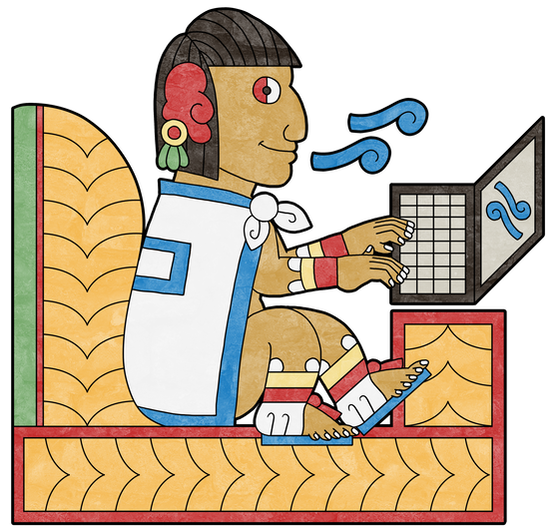

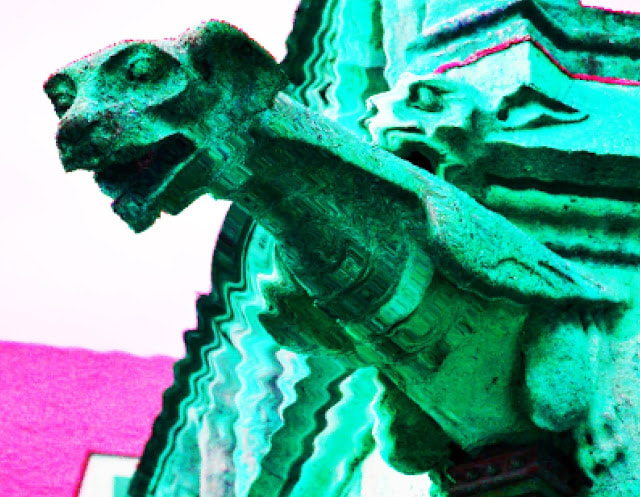
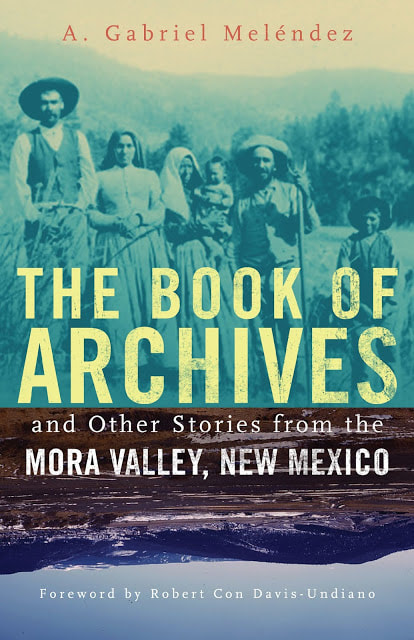
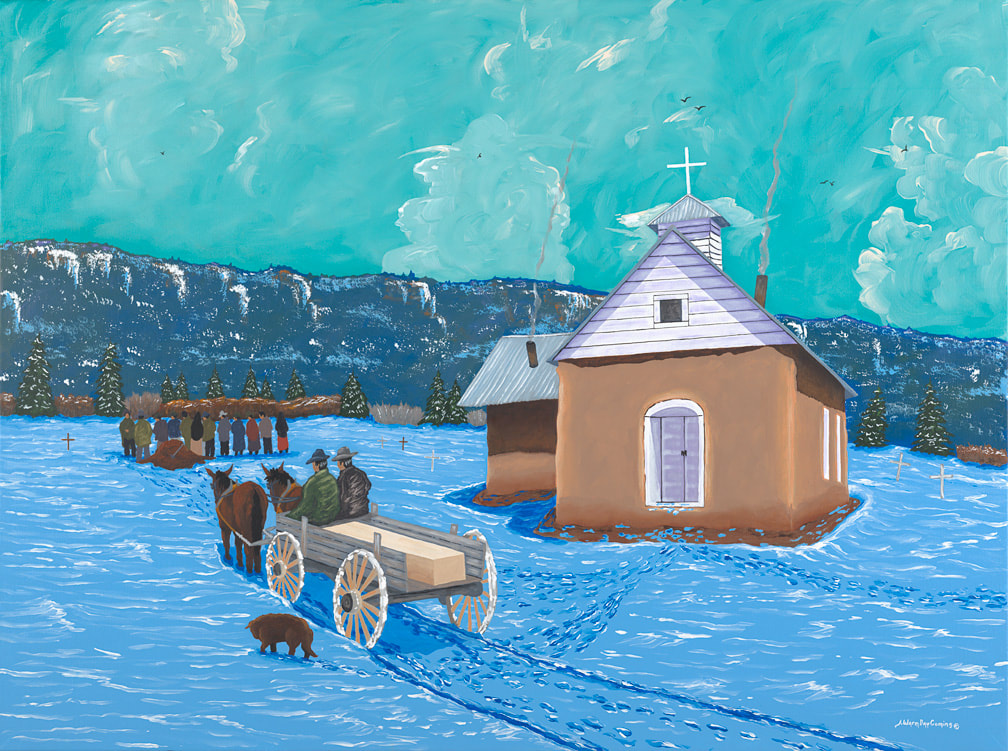
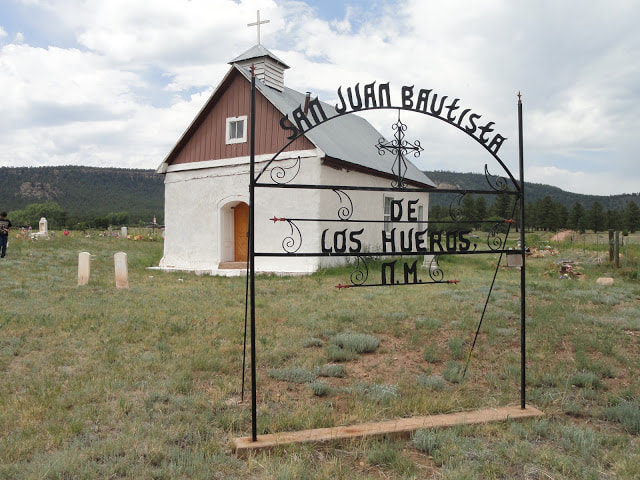
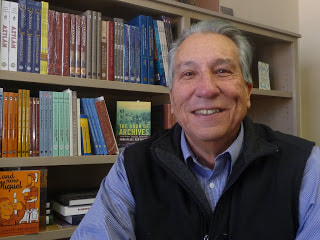
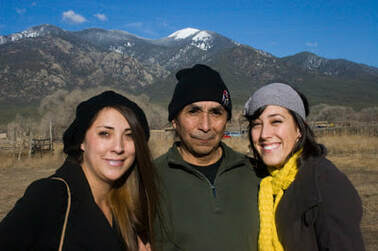

 RSS Feed
RSS Feed